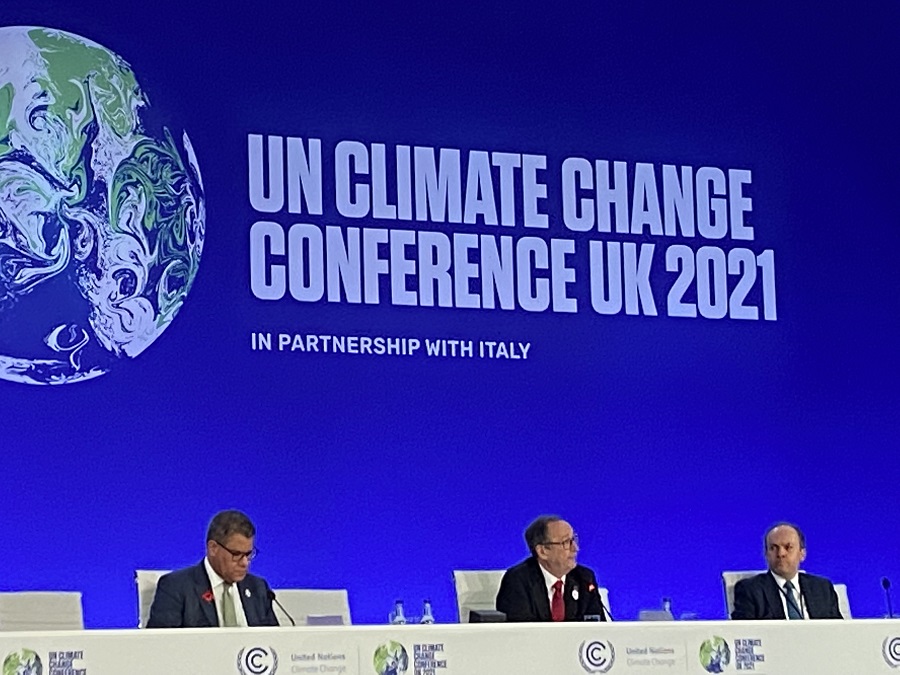Speech
Location: Glasgow
Event: Finance Day – Financing a More Resilient World
Delivered on: 3 November 2021.
Mr. President, Your Excellencies, Ladies and Gentlemen
It is an honor to be invited to speak here today on the topic of the private sector, and how it’s delivering on the challenge of launching new partnerships and innovative instruments in support of Financing a More Resilient World. It is particularly fitting to be speaking here in Glasgow, as this city and Scotland more broadly provide great inspiration and influence on our work.
It was here in Scotland in 1776 that Adam Smith published the Wealth of Nations. This work laid the intellectual foundations of the industrial revolutions that followed, from the shipbuilding cranes we see here on the River Clyde to wider transformation around the world. At COP26 Glasgow, we confront the environmental costs and economic benefits of what was unleashed from that spark, 245 years ago.
Adam Smith described the Invisible Hand of economics that shapes our lives and our world. It helped explain what gets built, who prospers and who does not. Now, in this climate emergency, that invisible hand must be redirected.
“
Since Paris, we have been working to guide the financial system’s invisible hand to shape a resilient future."
Since Paris, we have been working to guide the financial system’s invisible hand to shape a resilient future. An economy that protects our investments from climate will also protect the homes of our citizens, their crops and their livelihoods.
Though we are a long way from saying “mission accomplished”, the progress and momentum to date gives me confidence in the ability for us to turn planning and theory into real impact. To provide some examples, I would like to highlight four flagship initiatives, all based on collaborative, innovative foundations. And while they all have made extraordinary progress, they also lend themselves to the “what next.”
- The first flows directly from Paris. The Insurance Development Forum, or IDF, was launched at COP21 and co-chaired by the insurance industry, UNDP and World Bank. Under IDF Chair Denis Duverne of Axa and Ekhosuehi Iyahen, its Secretary General, as well as the support of the German Government, the IDF is supporting disaster risk finance across 20 developing countries as part of the InsuResilience target to protect 500 million people from climate risks by 2025.
The latest development out of the IDF - focused on the most vulnerable countries - is a formal partnership being announced today. The IDF and the Vulnerable Group of Twenty Ministers of Finance Countries will provide dedicated support to these countries via the Global Risk Modelling Alliance.
- The second initiative advances climate risk modelling for all countries. Last year UN Special Envoy Mark Carney gave the IDF a challenge: to solve the information failure that is driving the climate resilience emergency. I am pleased to share an important global breakthrough also being announced this week. The Global Resilience Index Initiative, supported by the UN Office for Disaster Risk Reduction and others - will provide climate resilience data and analytics for all by COP27.
- The third initiative I’d like to highlight relates to investment in infrastructure, and that’s the Coalition for Climate Resilient Investment, or CCRI. I have the good fortune to chair this coalition, launched at the UN Climate Action Summit in 2019. We come to COP26 with 120 members representing governments, the financial sector, engineers and many other organisations. CCRI has kept its promise to deliver practical solutions for a better pricing of physical climate risks in investment decision-making. CCRI’s solutions cover two critical areas of decision-making: national planning (or systemic resilience) and asset design & structuring. All CCRI solutions recognise the challenge faced by small island developing states when it comes to physical climate risks.
In a wonderful partnership with the government of Jamaica, and with the support of the UK Government and the Green Climate Fund, next week we are launching a tool that will allow for the identification of projects most capable of protecting the economic, social and ecosystem value in Jamaica over the next 20 years. We are very excited about the potential impact of this tool, and plan to roll it out in many other countries in the years to come.
- The final initiative relates to governance. To mainstream progress, regulation of financial markets requires climate risk to be disclosed, accounted and managed. Here at COP, insurance and wider financial regulators have contributed to a call to action. This call to action was launched this morning by the Cambridge Institute for Sustainability Leadership among others and includes twenty actions to apply climate resilience mandates across the financial system.
“
I propose a new financial order that builds upon the economic influence of Glasgow and forges a new role for the invisible hand to guide our resilient and prosperous future.”
In closing, I propose an answer to the question of “what next?” That here in Glasgow, with the inspiration of its economic heritage, we declare a new financial order, one that builds upon the economic influence of this place and forges a new role for the invisible hand to guide our resilient and prosperous future.
